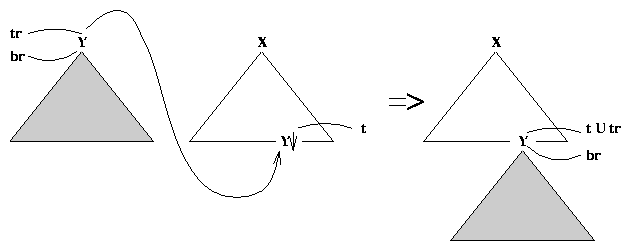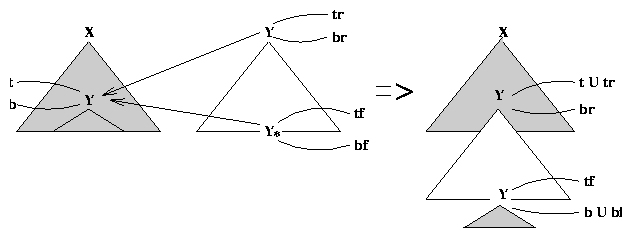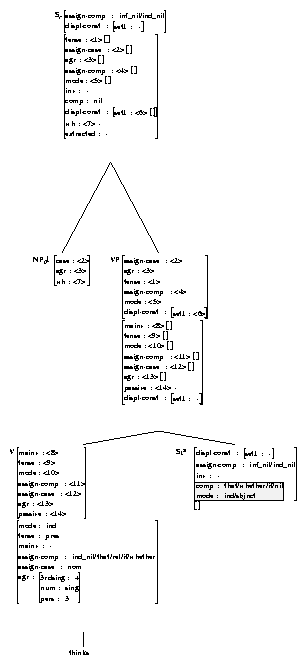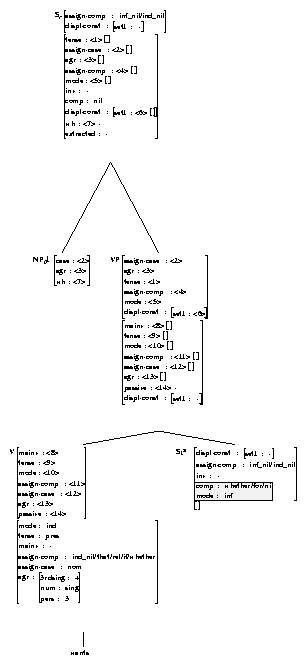
 |
The notions of substitution and adjunction must be augmented to fit within this new framework. The feature structure of a new node created by substitution inherits the union of the features of the original nodes. The top feature of the new node is the union of the top features of the two original nodes, while the bottom feature of the new node is simply the bottom feature of the top node of the substituting tree (since the substitution node has no bottom feature). Figure 2.52.4 shows this more clearly.
 |
Adjunction is only slightly more complicated. The node being adjoined into splits, and its top feature unifies with the top feature of the root adjoining node, while its bottom feature unifies with the bottom feature of the foot adjoining node. Again, this is easier shown graphically, as in Figure 2.62.5.
 |
 |
|
| think tree | want tree |
The embedding of the TAG formalism in a unification framework allows us to dynamically specify local constraints that would have otherwise had to have been made statically within the trees. Constraints that verbs make on their complements, for instance, can be implemented through the feature structures. The notions of Obligatory and Selective Adjunction, crucial to the formation of lexicalized grammars, can also be handled through the use of features.2.6 Perhaps more important to developing a grammar, though, is that the trees can serve as a schemata to be instantiated with lexical-specific features when an anchor is associated with the tree. To illustrate this, Figure 2.7 shows the same tree lexicalized with two different verbs, each of which instantiates the features of the tree according to its lexical selectional restrictions. In Figure 2.7, the lexical item thinks takes an indicative sentential complement, as in the sentence John thinks that Mary loves Sally. Want takes a sentential complement as well, but an infinitive one, as in John wants to love Mary. This distinction is easily captured in the features and passed to other nodes to constrain which trees this tree can adjoin into, both cutting down the number of separate trees needed and enforcing conceptual Selective Adjunctions (SA).